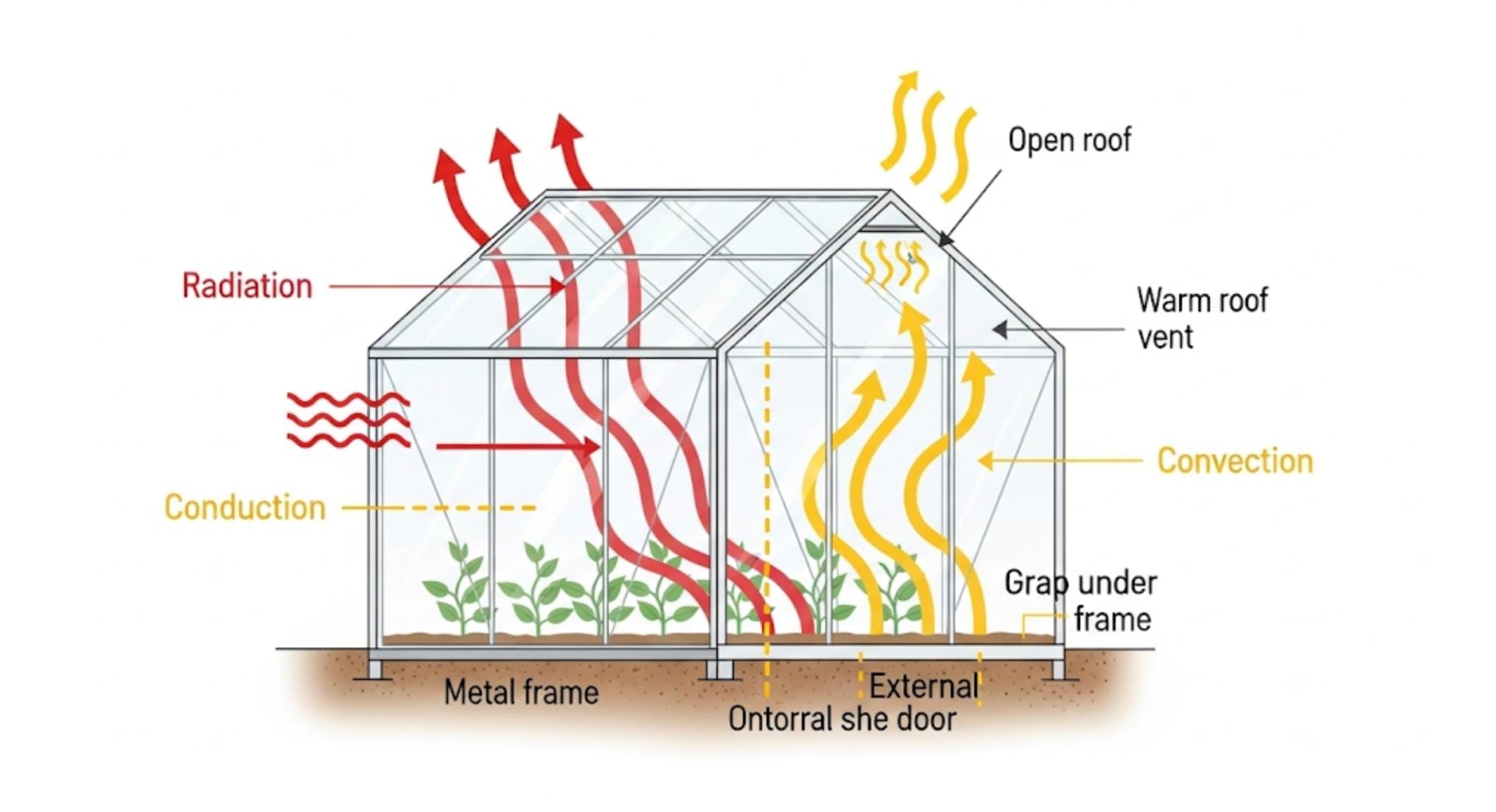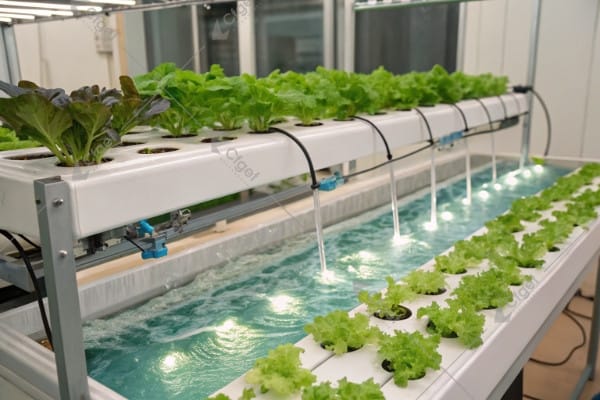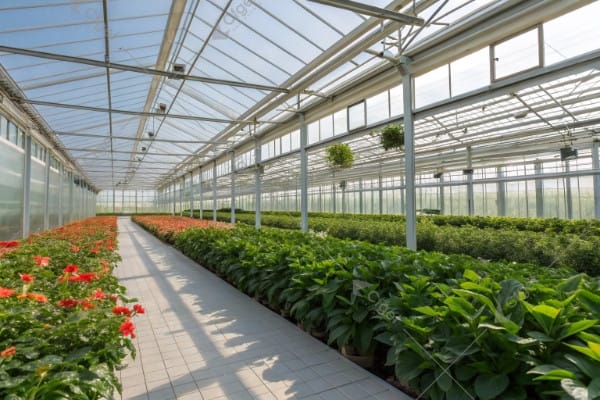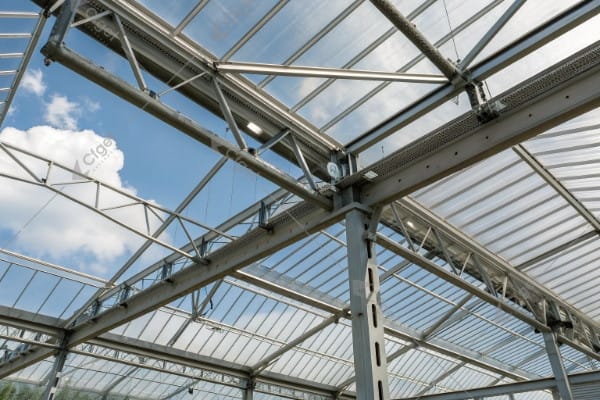Unpredictable weather, short growing seasons, and pesky insects can ruin months of gardening work. Many growers watch helplessly as their hard work is destroyed by a sudden frost or persistent pests.
Greenhouses solve these common growing challenges by creating a protected environment where plants can thrive year-round. They extend growing seasons, shield plants from pests and harsh weather, and give growers precise control over growing conditions—making them valuable for everyone from hobby gardeners to commercial farmers.
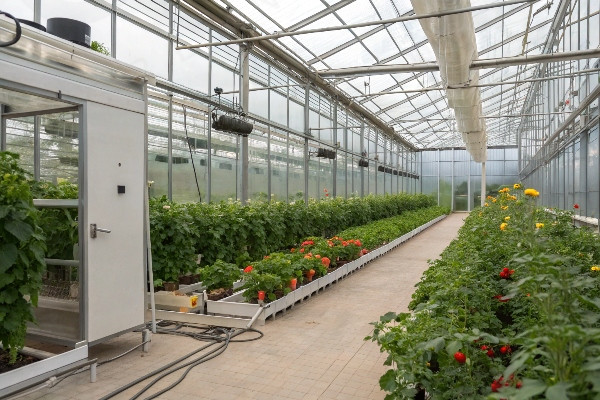
I remember the frustration of losing my tomato plants to an early frost after months of care. That experience led me to invest in my first greenhouse over 15 years ago. Since then, I’ve helped design greenhouse solutions for growers across Southeast Asia, Europe, and Central Asia. The transformation in crop reliability, yield, and growing options has been remarkable for our clients.
Don’t Miss:——Hydroponics Explained: Can You Really Grow More with Less in Your Greenhouse?
Extend Your Growing Season: Defying Climate Limitations?
Short growing seasons limit what you can grow and when you can harvest. In many regions, growers watch enviously as others in milder climates enjoy longer production periods and multiple harvests.
Greenhouses effectively extend your growing season by weeks or even months at both ends of the calendar. They trap solar energy and maintain warmer temperatures than outside conditions, allowing earlier spring planting and later fall harvests regardless of your climate zone.
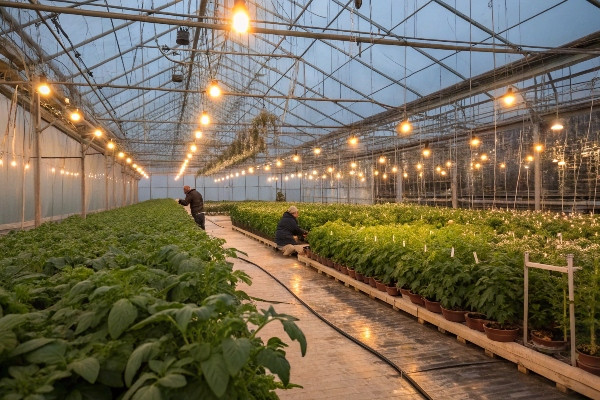
The ability to defy seasonal limitations represents one of the most valuable benefits of greenhouse growing. I’ve seen this transformation firsthand while working with clients in areas with traditionally short growing seasons. In Kazakhstan, one of our commercial clients increased their annual production window by nearly three months, allowing them to supply fresh produce when market prices were highest.
Greenhouse structures create microclimates that protect plants from early frosts and cold snaps that would otherwise damage or kill outdoor crops. This protection varies based on greenhouse type and heating systems. Even unheated structures (cold frames or high tunnels) can provide 2-4 weeks of extended growing on each end of the season.
Heated greenhouses offer even greater season extension, potentially creating year-round growing environments regardless of outside conditions. This capability transforms agricultural possibilities in regions previously limited to short seasonal production.
The economic impact of season extension can be substantial. For commercial growers, reaching markets earlier often means capturing premium prices before the main harvest floods the market. This "first to market" advantage creates a significant competitive edge.
For home growers, season extension means greater self-sufficiency and food security. Growing your own fresh vegetables year-round reduces dependence on imported produce and provides nutritional benefits from truly fresh food. The satisfaction of harvesting fresh tomatoes or greens in the middle of winter creates a psychological boost that many greenhouse owners mention as a key benefit.
Don’t Miss:——Polycarbonate vs. Glass Greenhouses: Which Glazing Reigns Supreme?
Types of Season-Extending Structures
| Structure Type | Season Extension | Temperature Control | Cost Range | Best For |
|---|---|---|---|---|
| Cold Frame | 2-4 weeks | Minimal | $50-200 | Seeds/seedlings, cold-hardy crops |
| High Tunnel | 4-8 weeks | Passive solar | $500-3,000 | Market gardens, row crops |
| Hobby Greenhouse | 8-12 weeks | Passive/active heating | $1,000-5,000 | Mixed plantings, temperature-sensitive crops |
| Commercial Greenhouse | Year-round potential | Precise climate controls | $10,000+ | Production agriculture, research |
Shield Your Crops: Protection from Pests, Weather, and Disease?
Pest infestations, extreme weather, and spreading diseases can destroy an entire crop overnight. These threats create constant stress and unpredictability for growers of all scales.
Greenhouses create a physical barrier that protects plants from damaging insects, harsh weather conditions, and many soil-borne diseases. This protection significantly reduces crop losses and decreases reliance on chemical treatments, resulting in healthier plants and cleaner produce.
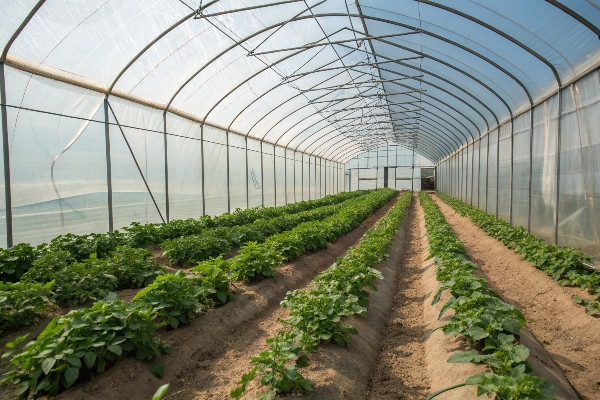
The protective function of greenhouses offers multiple advantages that directly impact crop success rates. I’ve witnessed these benefits across diverse growing operations—from small family farms in Vietnam managing monsoon seasons to large commercial operations in Europe seeking to reduce pesticide use.
Weather protection represents a primary benefit in many regions. Heavy rainfall, hail, strong winds, and extreme temperatures can all cause significant crop damage or complete loss. Greenhouse structures shield plants from these direct impacts. During a visit to our client site in Thailand, I saw firsthand how their greenhouse installation protected valuable orchid crops during an unexpected hailstorm that devastated outdoor plantings in neighboring fields.
Pest management becomes significantly more efficient within greenhouse environments. The physical barrier prevents many insects from reaching crops, allowing for reduced pesticide use. Integrated pest management (IPM) strategies work particularly well in controlled greenhouse settings, where beneficial insects can be introduced and maintained more effectively than in open fields.
The controlled environment also helps prevent many plant diseases, particularly those spread by rainfall splash, wind, or certain insects. Soil-borne pathogens can be eliminated through the use of raised beds or hydroponic systems that separate plants from potentially contaminated ground soil. This disease prevention aspect is especially valuable for crops susceptible to common blights and mildews.
Greenhouse production allows for more precise implementation of biosecurity measures. Our commercial clients particularly value the ability to control entry and exit points, establish sanitation protocols, and monitor for early signs of problems. This systematic approach to protection isn’t possible with field production.
Beyond these practical protections, greenhouses shield crops from human interference as well—reducing the risk of theft, vandalism, or accidental damage. This security aspect proves particularly important for high-value crops or research plantings.
Common Greenhouse Protection Benefits
| Protection Type | Field Growing Challenges | Greenhouse Solution | Impact on Production |
|---|---|---|---|
| Weather | Unpredictable conditions, crop damage | Physical barrier from elements | Consistent growth, reduced losses |
| Pests | Continuous pressure, chemical treatments | Physical exclusion, controlled entry | Reduced pesticide use, cleaner crops |
| Disease | Spread by rain, wind, vectors | Isolated environment, clean growing media | Lower infection rates, healthier plants |
| Physical | Animal damage, human interference | Secured structure, limited access | Protected investment, reduced losses |
Creating the Perfect Environment: Control Temperature, Humidity & Light?
Plants have specific environmental requirements that natural conditions rarely provide consistently. Fluctuations in temperature, humidity, and light create stress that limits growth potential and reduces yields.
Greenhouses enable precise control over growing conditions, allowing you to maintain ideal temperature ranges, optimize humidity levels, and supplement natural light when needed. This environmental management maximizes photosynthesis and plant development regardless of outside conditions.
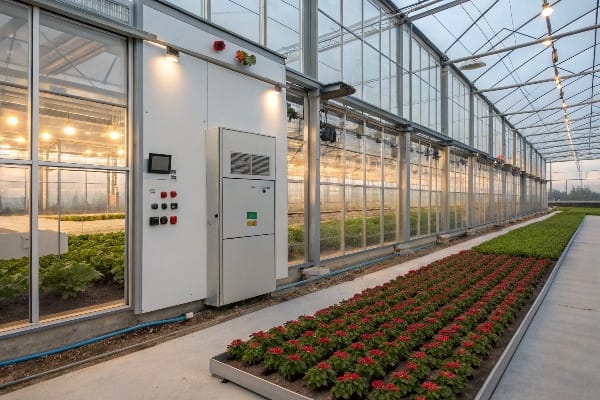
The ability to create and maintain optimal growing environments represents the cornerstone of greenhouse value. Throughout my years designing greenhouse systems for diverse climates, I’ve seen how environmental control transforms growing outcomes across various crops and regions.
Temperature management1 stands as perhaps the most recognized greenhouse benefit. Heat retention through the greenhouse effect naturally warms the structure during daylight hours. This passive heating can be supplemented with active systems ranging from simple space heaters to sophisticated hydronic circulation systems. Equally important is cooling capability, especially in warmer regions. Our greenhouse designs for Southeast Asian clients typically incorporate advanced ventilation, evaporative cooling, and sometimes mechanical refrigeration to maintain productive temperatures during intense heat.
Humidity control directly impacts plant health and productivity. High humidity can promote fungal diseases and reduce transpiration, while excessively dry conditions stress plants and increase watering needs. Greenhouse systems allow for humidity management through ventilation, circulation fans, misting systems, and dehumidification equipment when necessary. I’ve worked with research facilities in the Netherlands that maintain precise humidity ranges for experimental plant varieties—something impossible in open-field conditions.
Light management becomes increasingly important in greenhouse production, especially in regions with seasonal light limitations. Supplemental lighting extends growing hours and boosts photosynthesis during low-light periods. Advanced LED systems can now provide specific light spectrums tailored to different growth stages or crop requirements. One of our commercial clients in Northern Europe increased winter tomato yields by 35% after implementing our specialized lighting recommendations.
Carbon dioxide enrichment represents another environmental factor that can be managed in greenhouse settings. Since plants consume CO₂ during photosynthesis, maintaining optimal levels (typically 800-1200 ppm versus ambient 400 ppm) can significantly boost growth rates and yields. This technology becomes particularly valuable in sealed greenhouse environments with limited air exchange.
Water delivery can be precisely controlled through irrigation systems ranging from simple drip lines to sophisticated recirculating hydroponic setups. This water management reduces waste, prevents drought stress, and can deliver nutrients directly to plant roots when integrated with fertilization systems.
Environmental Control Components
| System Component | Function | Basic Options | Advanced Options |
|---|---|---|---|
| Heating | Maintain minimum temperatures | Passive solar, space heaters | Hydronic systems, ground-source heat |
| Cooling | Prevent overheating | Manual vents, shade cloth | Automated vents, evaporative cooling |
| Humidity Management | Maintain optimal moisture levels | Manual ventilation, hand misting | Dehumidifiers, automated misting |
| Light Supplementation | Extend growing hours, boost growth | Simple grow lights | Spectrum-specific LEDs, light moving systems |
| Air Circulation | Prevent stagnation, strengthen stems | Passive venting | Circulation fans, automated ventilation |
| CO₂ Enrichment2 | Enhance photosynthesis | N/A | CO₂ generators, monitoring systems |
From Hobby Gardens to Commercial Farms: The Versatility of Greenhouses?
Determining the right growing structure for your specific needs can feel overwhelming. Many potential greenhouse users delay their purchase, unsure if the investment will truly match their goals.
Greenhouses offer exceptional versatility, with options ranging from simple backyard structures to advanced commercial operations. This scalability makes them suitable for diverse applications—from extending a hobby garden’s season to supporting year-round commercial production of high-value crops.
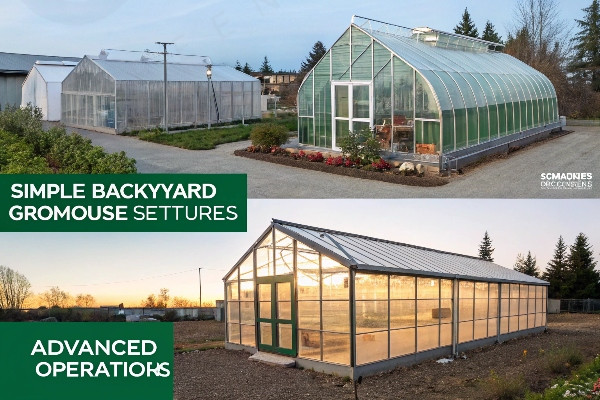
The remarkable adaptability of greenhouse structures makes them suitable for nearly any growing situation. Throughout my career with CFGET, I’ve had the privilege of designing greenhouse solutions across this entire spectrum—from helping hobbyists create productive home gardens to developing massive commercial complexes spanning hectares.
Hobby greenhouses transform backyard gardening possibilities. Even modest structures (typically 6-12 square meters) enable enthusiasts to grow plants that would otherwise be impossible in their climate. One memorable client in Sweden used her small greenhouse to successfully grow Mediterranean herbs and vegetables despite their short northern growing season. These smaller structures typically feature simple environmental controls—manual vents, perhaps a small heater, and basic irrigation.
Educational applications represent another important greenhouse category. Schools and community organizations use greenhouses as teaching tools for science, nutrition, and sustainability education. We’ve helped develop several school greenhouse projects where the structures serve dual purposes—producing food for cafeterias while providing hands-on learning opportunities for students.
Research facilities rely on greenhouse technology to conduct controlled experiments and plant breeding programs. These specialized structures often incorporate advanced environmental controls, data collection systems, and compartmentalized growing spaces. Our work with agricultural universities has included designing greenhouse spaces where different sections maintain distinct environmental conditions for comparative studies.
Commercial production represents the most sophisticated end of the greenhouse spectrum. These operations leverage technology to maximize yield, quality, and consistency throughout the year. Commercial greenhouses range from local market gardens of a few hundred square meters to industrial-scale operations covering many hectares. Our largest project involved a 12-hectare tomato production facility in Central Asia, integrating computer-controlled climate management, specialized lighting, and semi-automated harvesting systems.
The versatility extends to growing methods as well. Greenhouses can accommodate traditional soil cultivation, raised bed systems, container growing, or various hydroponic approaches. This flexibility allows growers to select the method best suited to their crops, resources, and market requirements.
The economic scalability of greenhouse technology makes it accessible across different investment levels. Simple structures can be constructed for relatively modest costs, while commercial facilities represent significant capital investments with corresponding production capabilities. The return on investment timeline varies accordingly, from hobby enjoyment to substantial commercial returns.
Greenhouse Applications Across Scales
| Scale | Typical Size | Common Uses | Technology Level | Investment Range |
|---|---|---|---|---|
| Hobby | 5-20 m² | Personal food production, exotic plants | Basic environmental controls | $500-5,000 |
| Market Garden | 50-500 m² | Local sales, specialized crops | Moderate automation, extended season | $5,000-50,000 |
| Educational/Research | 20-200 m² | Teaching, experiments, demonstration | Variable depending on purpose | $3,000-100,000 |
| Small Commercial | 500-2,000 m² | Regional distribution, year-round production | Significant automation, climate control | $50,000-300,000 |
| Large Commercial | 2,000+ m² | Wholesale distribution, export markets | Comprehensive automation, precise controls | $300,000+ |
Conclusion
Greenhouses transform growing possibilities by creating protected environments where plants thrive regardless of outside conditions. They extend seasons, shield crops from threats, enable precise environmental control, and adapt to diverse needs—making them invaluable tools for modern growing.

